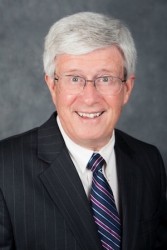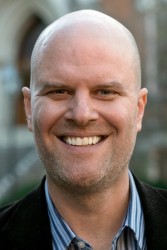The newest members of the Vanderbilt Student Media Hall of Fame include a Pulitzer Prize-winning journalist, a public relations executive and political analyst, a Vanderbilt dean, and the author of a New York Times bestseller on sports and civil rights pioneer Perry Wallace.
Selected for the 2016 class are Wendell (Sonny) Rawls Jr., Pat Nolan, Vanessa B. Beasley and Andrew Maraniss. A ceremony and reception to honor the inductees will be held during Vanderbilt Reunion Oct. 21 at the John Seigenthaler Center.
This marks the seventh class of the Vanderbilt Student Media Hall of Fame. To be selected, Vanderbilt alumni must have demonstrated leadership in student media and then distinguished themselves in their careers.
Wendell (Sonny) Rawls

Rawls, whose celebrated career has included award-winning investigative reporter, New York Times bureau chief, television screenwriter and professor, was born near Goodlettsville, Tennessee, and grew up in Chattanooga. He enrolled at Vanderbilt in 1959 and joined the Commodore yearbook staff two years later to assist then-editor John Hemphill. Rawls, who was very involved in intramural sports and Alpha Tau Omega fraternity, credits Hemphill with early influence on his career. “Hemphill impressed upon me the importance of correctly identifying scores of names in yearbook photos,” Rawls said. “These might be the only remembrances of some of my classmates. I learned the importance of accuracy, something that stayed with me through the years.”
Rawls took a break from college in 1964 but was employed as a university fundraiser in the Office of Alumni and Development. Rawls also served in the U.S. Army before returning to campus in 1966 to complete his degree. At that time, Rawls needed money to cover all of his college expenses.
Hemphill was working at The Tennessean as the Vanderbilt correspondent and encouraged Rawls to apply for a sports opening. Rawls became the tennis and bowling editor and wrote a series of investigative stories about the abuse of Tennessee Walking Horses. His series was nominated for a Pulitzer Prize. All of this happened before Rawls, who majored in history while working full time for The Tennessean, received his bachelor of arts in 1970.
In 1972, Rawls became the first national correspondent for the Philadelphia Inquirer. He was a Pulitzer finalist in 1975 and then won the Pulitzer in 1977 for a series of articles that disclosed 21 murders and other illegal activities inside a hospital for the criminally insane in Pennsylvania. The disclosed atrocities resulted in 37 guards and hospital officials being indicted for illegal activities before the hospital was closed. Rawls later wrote a book called Cold Storage based on that investigation.
Rawls joined The New York Times in 1977 and worked in both Washington, D.C., and Atlanta, where he became the Times’ Southern bureau chief. In 1986, he moved to the Atlanta Journal-Constitution to direct its news operation. In the next two years, the staff won two Pulitzer prizes and had seven finalists.
Rawls later became a screenwriter and producer for several movies and miniseries for television, including “A Woman Scorned: The Betty Broderick Story,” “Her Final Fury: Betty Broderick, the Last Chapter,” “In the Line of Duty: Ambush at Waco,” and “Tonya and Nancy: The Inside Story.”
In addition, he taught from 2000 to 2015 at Middle Tennessee State University, where he was named director of the Seigenthaler Chair of Excellence in First Amendment Studies. He also taught a Vanderbilt course on investigative reporting.
Rawls is married to Kathryn Stark Rawls, who earned a bachelor of arts from the College of Arts and Science and a master of arts from Peabody College. They have two children, a daughter and a son; and two granddaughters.
Pat Nolan

Similar to Rawls, Nolan said that his student media experiences led him down the journalism path, although Nolan focused more on broadcasting. He is a lifelong Nashvillian who grew up in the Hillsboro Village neighborhood next to campus. In August 1969, he enrolled at Peabody College and began volunteering as a disc jockey and news announcer at WRVU, then located in the south tower of Neely Auditorium.
“WRVU was known back then as a ‘carrier current station,’ since the signal was broadcast via wires that went through the steam tunnels and out to the dorms,” Nolan said. “There was a transmitter in each dorm that relayed the signal onto each floor. That worked in the smaller dorms but not so well in Carmichael Towers. If you drove by the towers and put your radio on 580, you could hear the signal for a block or two.”
By December 1970, the Federal Communication Commission had approved an educational FM license for WRVU. After his sophomore year, Nolan transferred to Vanderbilt and continued to work at the radio station.
“Our news department would read the Vanderbilt Hustler and the Vanderbilt Register and call people connected to those stories for interviews,” Nolan said. “We also recorded various campus lectures, such as an annual series by the late Oakley Ray, a much admired psychology professor. In addition, WRVU would carry any Vanderbilt baseball games not on WLAC, and I learned to ‘think on my feet’ during those broadcasts.”
Nolan served on the student media’s publications board his senior year. He also wrote a story for the 1973 Commodore about Nashville. Nolan earned his bachelor of arts in political science in May. The next month he was hired to report news for WPLN FM (Nashville Public Radio) under a Corporation for Public Broadcasting grant. He also did some stories for “All Things Considered.”
Then on July 3 he anchored WDCN-TV’s (now WNPT) first live coverage of a Metro Council meeting. The Vanderbilt Urban Renewal Plan was up for a public hearing. “I was very familiar with the plan because I had covered it while at WRVU. That council meeting was the beginning of a 12-year career for me anchoring the Metro Council television broadcasts.”
In 1975, Nolan was recruited to WTVF-TV (Nashville’s CBS affiliate), where he covered Metro Government for 10 years. Nolan left the media for two years to be press secretary and executive assistant to former Nashville Mayor Richard Fulton. He then returned to WTVF as a political analyst and became director of public relations for Hart & Company, an advertising and public relations firm.
In 1991, he joined DVL Seigenthaler Public Relations, a Finn Partners Company, where he is now a senior vice president. Nolan also has an interview program, “Inside Politics” on the NewsChannel5 Network, and a weekly column, “Capitol View,” for the WTVF website.
“I learned a lot during my WRVU days about gathering, writing and broadcasting stories,” Nolan said. He noted that the best part of working at WRVU was meeting his future wife, Betty Lee Love Nolan. She earned a bachelor of arts in Spanish and fine arts. They have two daughters, two granddaughters and a grandson.
Vanessa Beasley

Beasley, dean of The Martha Rivers Ingram Commons and an associate professor of communication studies, grew up in Jacksonville, Florida, and came to Vanderbilt as a first-year student in 1984. She had been the editor of her student newspaper in high school, but wanted to explore different media in college. “I joined the news team at WRVU and added my name to the wait list to be a disc jockey,” Beasley said. Like Nolan, she met her future spouse, Trey Beasley, at WRVU. “I was into REM, the Ramones and other bands coming out of the college scene,” she said. “The radio station provided some extra space for me to be creative. I encourage our students ‘to try different voices’ while they have the opportunity.”
Beasley served as secretary for the student media board her junior year. “I learned valuable lessons about managing volunteers for a nonprofit organization and conducting board meetings,” she said.
Beasley earned her bachelor of arts in speech communication and theatre arts in 1988 and went on to the University of Texas, where she received a doctorate in speech communication. She taught at Texas A&M University, Southern Methodist University and the University of Georgia before coming “home” to Vanderbilt’s Department of Communication Studies in 2007.
Media was an important part of her life in college and that has continued in her research, with a focus on race, gender and diversity in U.S. political rhetoric. She is the author of Who Belongs in America? Presidents, Rhetoric and Immigration and You, the People: American National Identity in Presidential Rhetoric: 1885-2000.
One of the courses she teaches, “Mass Media and Politics,” looks at the business of media, which she said is especially appropriate this election cycle. In 2015, she led a new Maymester course that she created in partnership with Queen’s University, Belfast, to explore the comparative, transnational understanding of the civil rights movements in the southern United States and in Belfast in the 1950s and 60s.
Also in 2015, Beasley was named dean of the Ingram Commons, where she serves as the academic leader, mentor and senior administrator of the first-year experience at Vanderbilt. “I didn’t feel like I fit in when I arrived here as a student, so I think it’s really important that our exceptionally talented faculty and staff across campus strive to meet students ‘where they are’ when they in the transition from high school to college,” Beasley said. “That’s why I am so committed to helping every incoming student find his or her place on our campus.”
Beasley is joined in the Dean’s Residence on campus by her husband, Trey, who is assistant vice chancellor for treasury and university treasurer, and their two sons.
Andrew Maraniss

One of the requirements for all first-year Vanderbilt students is the Commons Reading—a text that all students receive by mail and are expected to read over the summer prior to their first semester. The undergraduate Class of 2020 will read Strong Inside: Perry Wallace and the Collision of Race and Sports in the South (Vanderbilt University Press, December 2014) by Maraniss, who rounds out this year’s group of student media honorees.
Maraniss was born in Madison, Wisconsin, and grew up primarily in Washington, D.C., but later moved to Austin, Texas, where his father (journalist and author David Maraniss), was the Southwest bureau chief for the Washington Post. “One day my dad was visiting my high school and noticed a poster advertising the Fred Russell-Grantland Rice Scholarship,” Maraniss said. “That was life changing. I had been the sports editor for the Austin High Maroon and realized this would be a perfect scholarship for me.”
Maraniss received the Russell-Rice scholarship in 1988. “I was grateful for the opportunity and privilege to get to know alumnus and legendary sports journalist Fred Russell,” he said. “A couple of times each year, Mr. Russell would take the four scholarship recipients in school (one for each year) to the University Club, where we would learn about Vanderbilt leaders and iconic sports figures that Russell knew. I bonded with my university quickly and treasured my friendship with him.”
Each year the previous recipient of the Russell-Rice scholarship would welcome the new awardee to campus and to student media. Dave Sheinin did this for Maraniss, who covered men’s and women’s soccer his first semester. Sheinin, now a Student Media Hall of Famer, later wrote an article for Versus magazine on Perry Wallace.
“That was the first time I heard about Wallace,” Maraniss said. “I was taking a black history class with Yollette Jones (now associate dean in the College of Arts and Science),” Maraniss said. “I asked her permission to write a class paper on Wallace. Thank goodness she agreed, and I tracked down Wallace, who was a law professor at the University of Baltimore. I also wrote several articles for The Hustler about his legacy.”
Maraniss earned a bachelor of arts in history in 1992 and went to work for the Vanderbilt Athletics Department in media relations. He moved to Tampa, Florida, to work for the Tampa Bay (Devil) Rays team in its inaugural season. In 1999, he returned to Nashville and joined McNeely Pigott and Fox Public Relations. Meanwhile, his interest in race, sports and the story of Perry Wallace deepened. In 2006, he began writing the manuscript for Strong Inside, devoting many evenings and weekends to the project.
Strong Inside has been awarded the Lillian Smith Book Award and the lone Special Recognition honor at the 2015 RFK Book Awards. Meanwhile, Maraniss has left McNeely Pigott and Fox to focus on writing books. He is also contributing to an ESPN website called “The Undefeated.”
“This career adjustment will allow me to focus on my two true loves, my family and writing,” said Maraniss, who is married to Alison Williams Maraniss. They have two children, a daughter and son.
The Student Media Hall of Fame induction ceremony is by invitation only. For more information, email Paige Clancy, Vanderbilt Student Communications media adviser.